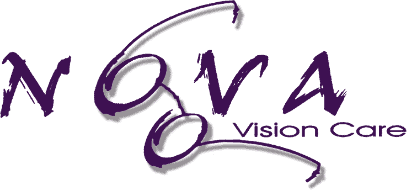The importance of infant eye exams
By now we are sure you have seen the cute video of the baby trying on her glasses and seeing for the first time. If you haven’t seen it you can below . It is wonderful to see her reaction to seeing clearly for the first time.
Here at Nova Vision Care we know the importance of infant eye exams and are a participating member of the InfantSEE program. InfantSEE is a no-cost public health program developed to provide professional eye care for infants nationwide. Through InfantSEE, optometrists provide a one-time, comprehensive eye assessment to infants in their first year of life, offering early detection of potential eye and vision problems at no cost regardless of income.
The InfantSEE program:
- Provides no-cost access to an eye-care doctor who has the instruments and resources not available to general-care doctors like pediatricians and family physicians
- Detects potential problems that, if undetected, may lead to learning and developmental issues later
- Gives new parents the peace of mind that their infant’s vision is developing properly
Prevalence of Vision Problems and Eye Diseases That Will Develop in Children
- 1 in 10 children is at risk from undiagnosed vision problems
- 1 in 30 children will be affected by amblyopia – often referred to as lazy eye – a leading cause of vision loss in people younger than 45 years
- 1 in 25 will develop strabismus – more commonly known as crossed-eyes – a risk factor for amblyopia
- 1 in 33 will show significant refractive error such as near-sightedness, far-sightedness and astigmatism
- 1 in 100 will exhibit evidence of eye disease – e.g. glaucoma
- 1 in 20,000 children have retinoblastoma (intraocular cancer) the seventh most common pediatric cancer
Clinical Data Demonstrating the Need for InfantSEE
- A study reported by the American Academy of Pediatric Ophthalmology and Strabismus (AAPOS) in 1999 compared two groups of 8-year-olds for amblyopia
- One group of 808 children had been screened between the ages of 12 and 30 months and provided appropriate treatment
- The other 782 children from the same community did not receive the infant screening
- At age 8, the group that did not receive the infant screening was 17 times more likely to have amblyopia
- The Avon Longitudinal Study of Pregnancy and Childhood (ALSPAC) reported that intensive screening performed 6 times between ages 8 months and 37 months by an eye care professional led to a decrease in:
- Amblyopia, which was three times less likely after treatment – from 1.8 percent to 0.6 percent
- Residual amblyopia from 25 percent to 7.5 percent after treatment
- Current red reflex screening appears to be ineffective in detecting early retinoblastoma as over 80 percent of patients had their presenting sign detected by a family member or friend
- Untreated amblyopia costs the U.S. nearly $7.4 billion in earning power each year. There is a return of $22 for each dollar spent on amblyopia diagnosis and treatment
We are conveniently located in Beavercreek, OH. If you have any questions or concerns please contact us at (937)320-0300.
